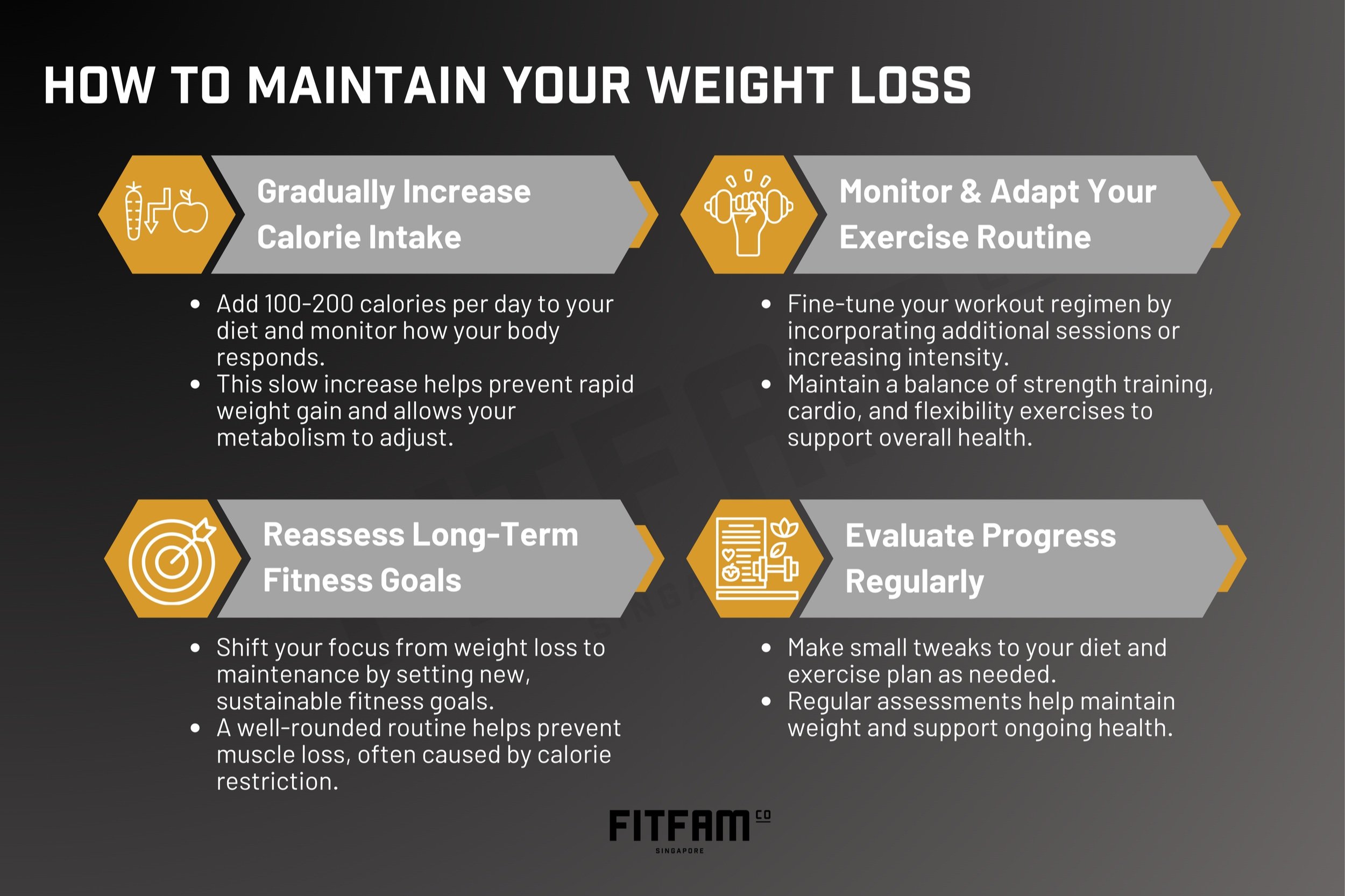HOW TO LOSE WEIGHT AND MAINTAIN IT
The ever so elusive concept ‘how to lose weight’ is similar to trying to find the secret to happiness in a fortune cookie - everyone’s looking for the magic formula. To no one’s surprise, the weight loss industry is valued at a whopping 300 billion dollars.
This immense focus on shrinking body size drives many people toward quick fixes that promise rapid results. This highlights the need for a more thoughtful and lasting approach to weight management and effective weight loss strategies, instead of playing the yo-yo with one’s body.
When discussing health and fitness, it's crucial to distinguish between weight loss and fat loss, as they represent different goals and outcomes. Weight loss refers to a reduction in overall body mass, which includes fat, muscle, and water. In contrast, fat loss specifically targets the reduction of adipose tissue while ideally preserving lean muscle mass. This research shows that strategies focused on improving metabolic health are more effective than those aimed solely at weight loss.
Additionally, studies demonstrate that preserving muscle mass during weight loss leads to better long-term health outcomes. Thus, while weight loss is beneficial, targeting fat loss and metabolic improvements provides more substantial benefits for body composition and overall wellness.
Before diving into solutions, it’s crucial to emphasize the importance of the right mindset and setting realistic goals. Many people struggle with weight loss and eventually give up due to impatience, which often becomes evident during goal-setting. How many of us have been lured by the promise of 'abs in 16 weeks'? While a 12 or 16-week program can be a great start, claiming you can lose more than 4 kg of body fat in that time frame is misleading and unrealistic. If you embark on your fitness journey expecting to shed 10 kg in 12 weeks, you’re likely to feel disheartened by the end or, worse, develop a negative relationship with food and exercise.
Extreme measures like liquid diets, cutting out entire food groups, or excessively frequent workouts can be unsustainable and demoralizing. Or trying to find the best physical activity for weight loss, instead of choosing forms of movement you truly enjoy can be frustrating and miserable. How long before you feel like giving up and doubting yourself?
Good news: we are here to make your life easy. Now that we have highlighted common pitfalls in most people’s weight loss journeys, let’s discuss some realistic sustainable weight loss strategies.
How to Lose Weight
Prioritize Consistency Over Intensity
Focus on establishing a consistent routine that you can maintain in the long run. Instead of diving into an intense regimen, aim for regular, moderate physical activity and diet changes that fit seamlessly into your lifestyle. Do not expect yourself to be able to run every single day if you have never enjoyed running. There is no best exercise for weight loss, despite what the internet tries to sell us. If you are not a morning person, scheduling an exercise session after work might work better in the long run instead of 5am sessions.
Set Non-Scale Victories (NSVs)
Setting Non-Scale Victories (NSVs) is a fantastic way to track progress and stay motivated beyond just the number on the scale. For instance, if you notice that you have more energy throughout the day, you might celebrate being able to complete a workout or take a long walk without feeling fatigued.
Improved mood can be marked by how often you find yourself smiling or feeling positive, perhaps even noting how you've handled stressful situations with greater ease. Better sleep could show when you have increased nights with restful sleep without waking up frequently or how quickly you fall asleep. You might also notice a positive change in your sleep routine, like sticking to a consistent bedtime.
Some people sleep like a baby when they have a workout session at night before bedtime. When it comes to clothing, rather than just focusing on size, pay attention to how certain outfits feel. For example, if you can comfortably wear a pair of jeans that previously felt tight, that’s a great NSV!
Sometimes our scale weight might stay the same while losing body fat and a smaller waistline can be proof of that. You could also celebrate when you find yourself reaching for healthier food options or cooking more nutritious meals, showcasing a shift in your habits and preferences. By identifying and celebrating these victories, you not only reinforce your progress but also build a positive mindset that encourages you to keep moving forward on your health journey.
Focus on Strength and Mobility
Incorporating strength training and flexibility exercises into your routine is essential for enhancing overall physical health and longevity. Building muscle not only supports weight loss but also improves mobility, leading to stronger joints and a reduced risk of injury when lifting heavy weights. To kickstart your journey, explore our comprehensive workout plan here.
Cultivate a Positive Mindset
Focus on self-compassion and progress, not perfection. A positive mindset keeps you motivated and resilient during your weight loss journey, turning setbacks into learning opportunities. We understand this is easier said than done; realistic weight loss goals and an uplifting social circle are crucial. Losing 10 kg in 10 days might mean surviving on water and broccoli, which is unenjoyable and leads to quick weight regain. In contrast, how much relief do you feel about losing 10 kg in 10 months?
Prioritize Volume Eating
When searching for weight loss tips or long-term management strategies, the usual advice you’ll find is “eat less and move more.” This conventional guidance often feels frustratingly vague and unhelpful. But what if we flipped the script? Instead of focusing on eating less, imagine focusing on eating more - while still keeping your calorie intake low. Sounds confusing? Let us explain how this approach, known as volume eating, combined with portion control, can transform your weight loss journey and make it less painful.
Volume eating focuses on consuming large quantities of low-calorie foods, such as vegetables, fruits, low fat food items and wholegrains. This will allow you to feel full and satisfied without consuming excessive calories. A bowl of watermelon worth 200 calories will be a lot more filling as it takes up more space in your stomach than 1 tablespoon of nut butter that is worth 200 calories. Combined with portion control, this approach allows you to enjoy satisfying servings while staying within your calorie goals. For more insights on effective diets for weight loss, check out our blog.
Calorie Deficit
Another key concept in weight loss is the ‘calorie deficit.’ Simply put, a calorie deficit occurs when you consume fewer calories than you burn. To lose body fat (not just weight), you must create this caloric shortfall. For a detailed guide on how to achieve a successful weight loss phase, download our comprehensive blueprint here.
How to Maintain Your Weight Loss
Transitioning from a weight loss phase to maintenance is a delicate process that requires mindful adjustments to both your diet and exercise routines. Rushing through this phase or neglecting key elements can lead to regaining lost weight, but by taking a gradual approach, you can set yourself up for long-term success.
Gradually Increase Caloric Intake
Add 100-200 calories per day to your diet and monitor how your body responds. This slow increase helps prevent rapid weight gain and allows your metabolism to adjust.
Monitor and Adapt Your Exercise Routine
Fine-tune your workout regimen by incorporating additional sessions or increasing intensity. Maintain a balance of strength training, cardio, and flexibility exercises to support overall health.
Reassess Long-Term Fitness Goals
Shift your focus from weight loss to maintenance by setting new, sustainable fitness goals. A well-rounded routine helps prevent muscle loss, often caused by calorie restriction.
Evaluate Progress Regularly
Make small tweaks to your diet and exercise plan as needed. Regular assessments help maintain weight and support ongoing health.
By following these steps and regularly evaluating your progress, you'll create a sustainable lifestyle that supports your new weight while promoting continued health and wellness. With consistency and gradual adjustments, you can keep the weight off and enjoy the benefits of a healthier lifestyle.
Conclusion
In conclusion, how to lose weight and maintain it? This process requires more than just temporary fixes; it demands a commitment to sustainable practices and a realistic mindset. Remember, successful weight management isn’t about rapid transformations but rather about making gradual, healthy lifestyle habits. Additionally, you don’t HAVE to get active to lose weight. However, getting active will translate to a higher quality of life - being able to carry your groceries back home, place your carry-on in the overhead cabin and keep up with your children and grandchildren.
As you continue on your path to a healthier and fitter you, stay committed to your goals, be kind to yourself through setbacks, and recognize that it is a lifelong journey that requires lifestyle changes for weight loss. Embrace the process, celebrate your wins, and remember that every small step forward contributes to a healthier, happier you. We hope you have enjoyed today’s blog on how to lose weight and maintain it: tips for sustainable weight loss and found it useful. Before you leave with a fantastic mindset for weight loss, check out our pre workout nutrition blog so that you can be well equipped for effective workout sessions in your weight loss journey and beyond that.
At FITFAMCO, we provide personalized training and nutrition coaching to support your weight loss and maintenance journey. Our dedicated experts are here to guide you towards achieving your healthy life goals more effectively.



